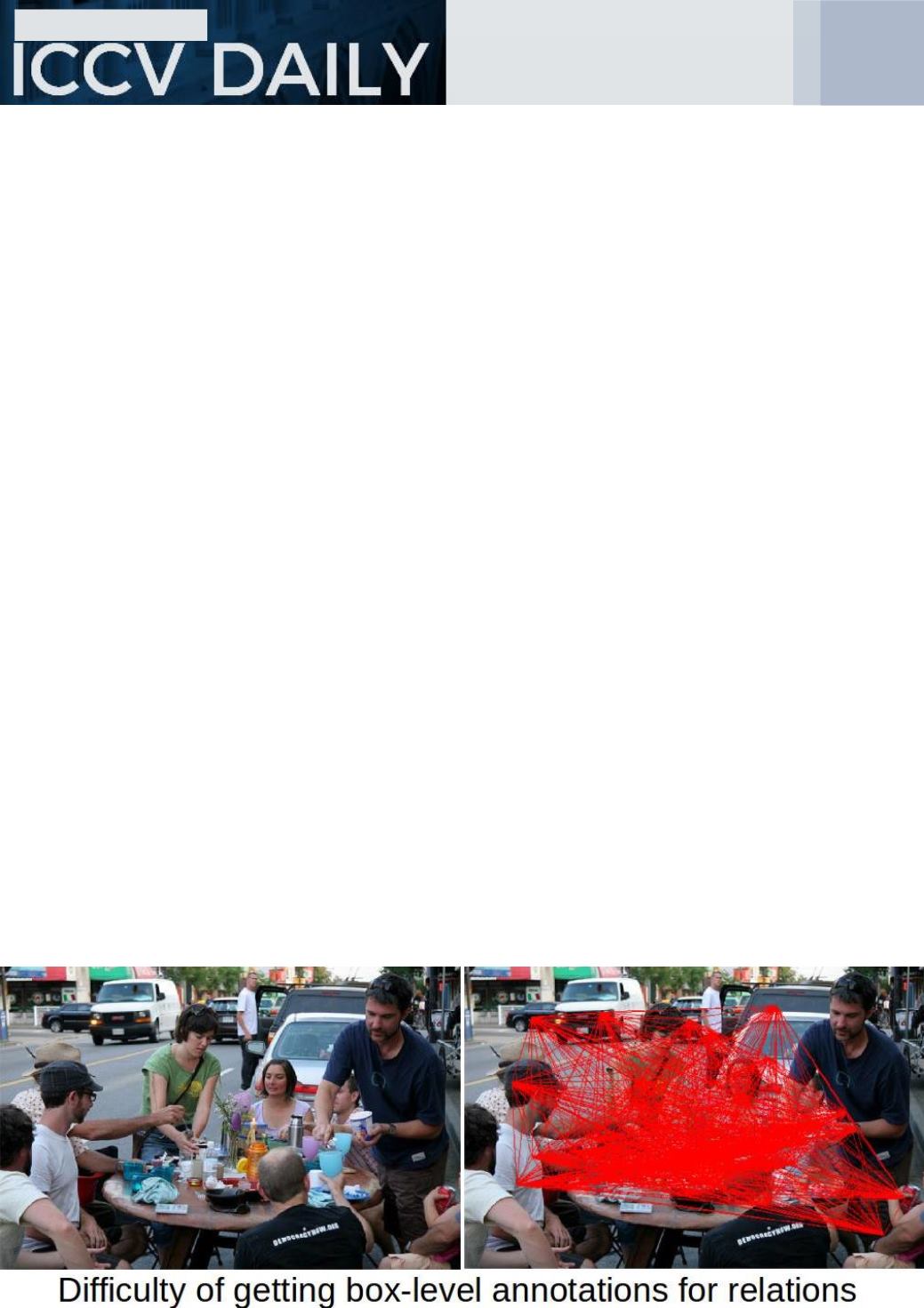

to learn with full supervision these
kinds of relations, you would have to
annotate all the relations between the
objects in an image. Getting this kind of
annotation is very expensive, because
the total number of annotations you
would have to get for one image is n2,
where n is the number of objects in
your image.”
The main benefit of this is that they just
require annotation at image level, so
people don’t have to draw the boxes
between all objects and annotate the
relations for all of those pairs of
objects.
Julia tells us their method is in two
stages. The first stage is to get
candidate objects for images. For this,
they use a standard object detector.
Then they have these candidate objects
as proposals and want to learn the
relations between them. For this, they
use a method called discriminative
clustering, which is a very simple
framework developed by
Francis Bach
and
Zaïd Harchaoui
. It is a very flexible
method which allows them to
incorporate constraints very simply.
Julia says the next step is to move
towards using more natural language.
Right now, they require image-level
triplets.
They are constraining
annotation to be in the form of triplets
inside a limited vocabulary – a fixed
vocabulary for object and a fixed
vocabulary for relation – so the next
step is to learn directly from captions.
On the internet, if you want to use web
data, you will encounter natural
language, not triplets.
Julia concludes by saying: “
I would like
to advertise a new dataset that we
introduced which is called UnRel for
unusual relations. This dataset also
answers the difficulty to get
annotations at box-level, but this time
at test time, because you encounter a
lot of missing annotation for evaluation,
that would introduce noise at
evaluation. To solve this problem of
missing annotations at test time, we
introduce a dataset of unusual
relations. For example, a dog riding a
bike or a car in trees. The advantage of
using this dataset for evaluation is that
you will have a reduced level of noise in
evaluation. You can now evaluate with
retrieval, without worrying about the
problem of missing annotation
.”
If you want to learn more about
Julia’s work, come today (Friday)
to her oral at 13:30 and her poster
at 15:00.
9
Friday
Julia Peyre
















